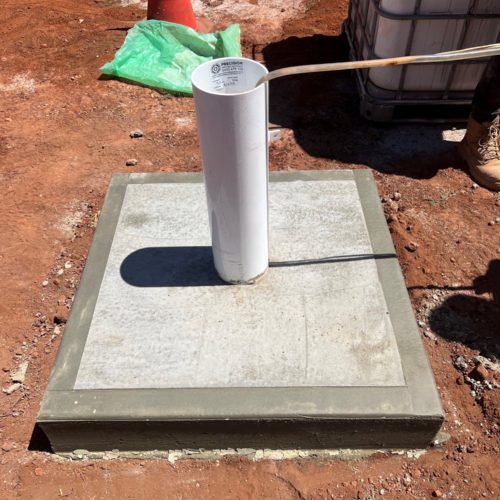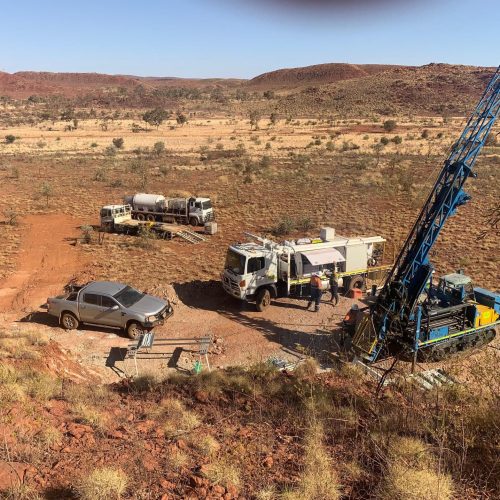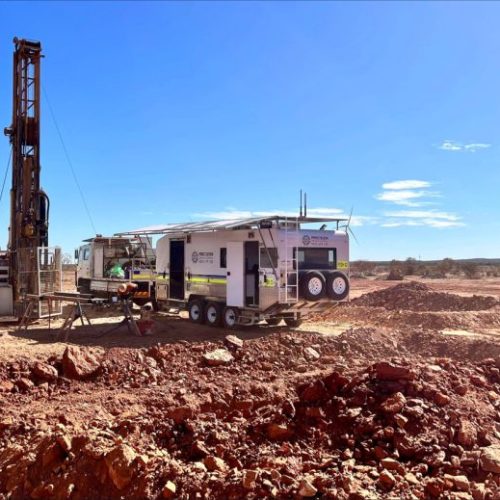In mineral exploration, precision is paramount. Core drilling provides critical geological samples used to assess mineral deposits and inform future mining operations. Selecting the appropriate core drilling size is essential to balance cost-efficiency, sample quality, and geological suitability. This guide explores common diamond core bit sizes, including a diamond drill core sizes chart, and explains how to select the best bit for your project.
What Are The Standard Core Drill Sizes?
Core drilling sizes refer to the diameter of the drill bit and the diameter of the recovered rock core. In diamond drilling, bits are designed to cut through hard rock while preserving a solid cylindrical sample from the centre. These samples are then used for geological logging, structural analysis, and laboratory testing.
Each bit has:
- Hole (outer) diameter: The width of the hole drilled into the ground.
- Core (inner) diameter: The size of the core sample retrieved.
The industry standard sizes are categorised into a system known as the Q-series, ranging from AQ (smallest) to PQ (largest). This system, developed by Boart Longyear, is widely used across Western Australia’s mining sector.
Diamond Drill Core Sizes Chart
Below is a chart showing standard core drill sizes for mineral exploration:
Core Bit Sizes Chart for Diamond Drilling Projects
| Core Bit Size | Hole Diameter (mm) | Core Diameter (mm) | Common Use |
| AQ | 48.0 | 27.0 | Shallow or early-stage exploration |
| BQ | 60.0 | 36.5 | Cost-effective for preliminary surveys |
| NQ | 75.7 | 47.6 | Industry standard for deep resource drilling |
| HQ | 96.0 | 63.5 | Better recovery in broken or soft ground |
| PQ | 122.6 | 85.0 | Used for metallurgical testing or bulk sampling |
These diamond core drill bit sizes offer a range of solutions to suit different project phases, geological conditions, and sample requirements.
How to Choose the Best Diamond Core Drill Bit Size
Selecting the right core drill bit size can significantly impact sample quality, drilling speed, and cost control. Consider the following factors:
- Sample Requirements: Larger diameters (e.g., HQ core size, PQ) provide more material for analysis, especially important for metallurgical or structural testing.
- Ground Conditions: In fractured or unstable ground, HQ or PQ triple-tube systems can improve core recovery.
- Project Depth: Smaller sizes like BQ or NQ are ideal for deeper holes where reduced weight and torque are advantageous.
- Budget: Smaller bits typically reduce drilling costs but may not retrieve enough material for thorough testing.
For most resource definition drilling in Western Australia, NQ core size offers the best balance between cost efficiency and sample integrity.
Thin-Wall and Triple Tube Core Drill Bit Sizes
In addition to the standard sizes, several variants offer enhanced performance for specific ground conditions:
Triple Tube Variants (e.g., NQ3, HQ3, PQ3)
- Improved recovery in broken or soft formations.
- Reduces sample loss and improves logging accuracy.
Thin-Wall Core Bits (e.g., NTW, HTW)
- Larger core diameter with the same hole size.
- Ideal when maximising recovery without increasing rig size or cost.
These options are especially useful in geotechnical drilling or where core integrity is vital to the project’s success.
Core Size Selection in Western Australia
In Western Australia, ground conditions can vary significantly across regions:
- Goldfields and Yilgarn Craton: Hard rock formations typically allow for standard NQ and HQ sizes.
- Pilbara and Kimberley: Fractured terrain may require HQ3 or PQ for better core recovery.
- Remote Locations: Transport limitations may dictate smaller, lighter rigs using BQ or NTW bits.
At Precision Drilling, we work closely with geologists to assess the terrain and recommend core bit sizes suited to the local geology and your exploration goals.
Why Precision Drilling Knows Diamond Core Bit Sizes Best
Selecting the right diamond core bit size isn’t just a technical decision; it’s a strategic one. The right choice saves time, improves data quality, and supports a successful mining project.
At Precision Drilling, we offer:
Full support for AQ to PQ core sizes and advanced configurations.
Extensive experience in WA terrain.
Custom drilling programs tailored to your project phase and budget.
Ready to optimise your diamond core drilling? Get in touch with our team for expert advice and reliable results.
Frequently Asked Questions
What is the standard HQ core diameter?
The standard HQ core diameter is 63.5 mm, making it ideal for retrieving larger core samples in fractured ground.
What is the difference between NQ and HQ core sizes?
The NQ core size has a diameter of 47.6 mm, while the HQ is 63.5 mm. HQ is better suited to poor ground conditions due to a larger sample size and recovery.
Why use a diamond core drill bit?
Diamond core drill bit sizes are engineered for precise, high-efficiency drilling in hard rock formations, ideal for mineral exploration.



